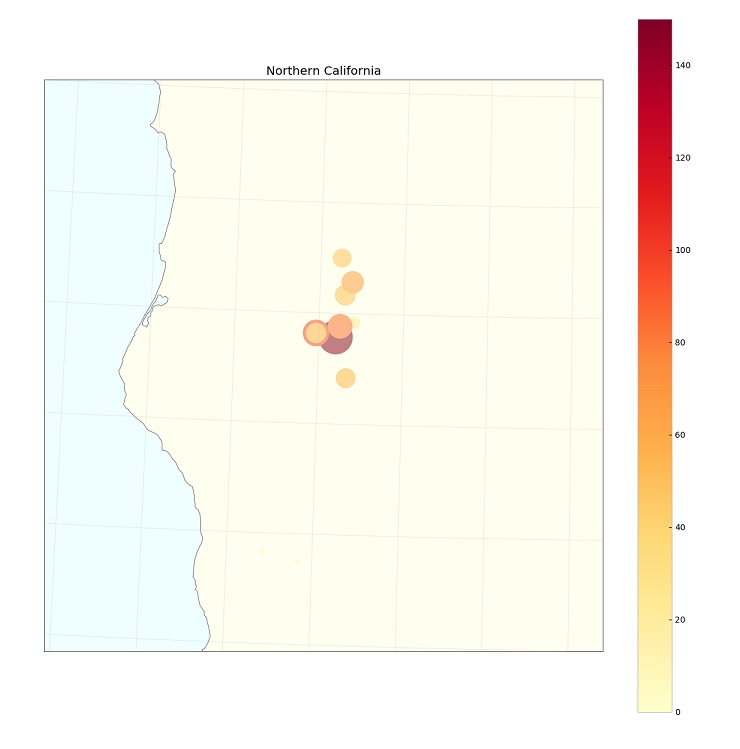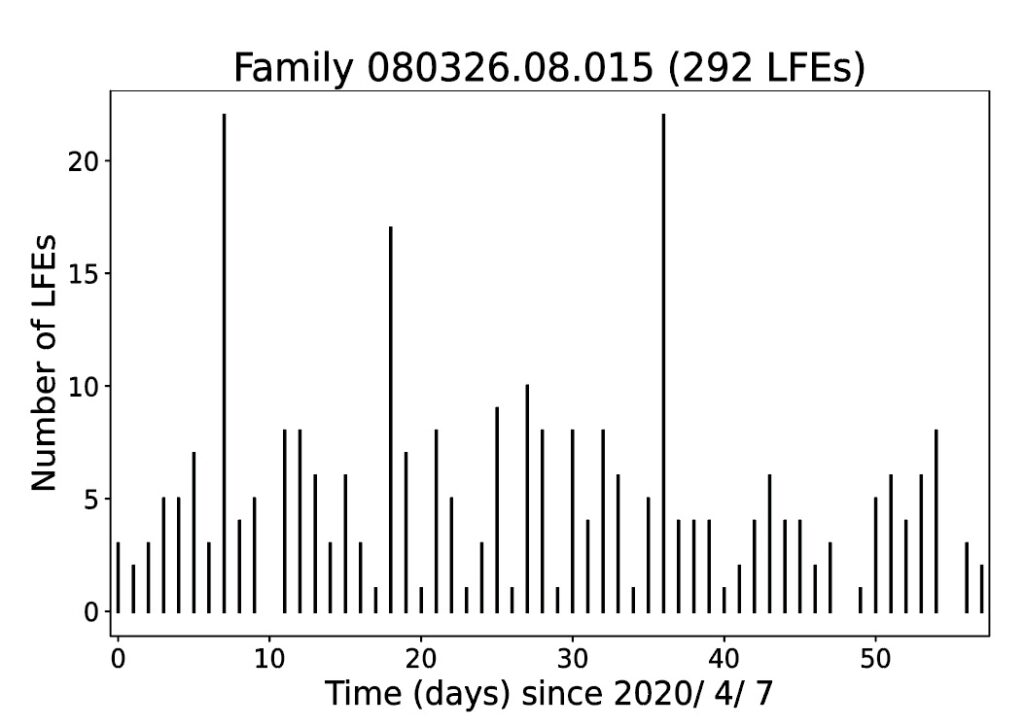Project Lead: Ariane Ducellier, UW Department of Earth & Space Sciences PhD Candidate
eScience Liaison: Scott Henderson
Low-frequency earthquakes (LFEs) are small magnitude earthquakes, with typical magnitude less than 2,and reduced amplitudes at frequencies greater than 10 Hz relative to ordinary small earthquakes. Their occurrence is often associated with tectonic tremor and slow slip events along the plate boundary in subduction zones and occasionally transform
fault zones. They are usually grouped into families of events, with all the earthquakes of a given family originating from the same small patch on the plate interface, and recurring more or less episodically in a bursty manner. Currently, many research papers analyze seismic data for a finite period of time, and produce a catalog of low-frequency earthquakes for this given period of time. However, there is little continuous monitoring of these phenomena.
We are currently using data from seismic stations in northern California to detect low-frequency earthquakes and produce a catalog during the period 2007-2019. However, the seismic stations that we are using are still installed and recording new data every day. Thus, we want to develop an application that will carry out the same analysis (we have been conducting offline so far) now automatically and continuously on the future data to be recorded during the year 2020 and after. Therefore, an increase of low-frequency earthquake activity will be automatically detected and reported as soon as it has started.

Project Results
We have created a Python package with the Python tool poetry and made it available to the public on GitHub. On GitHub, we have created a workflow that every day launches the code source to download the seismic data from three days ago, analyze the data and find the low-frequency earthquakes. The corresponding catalog for this day is then stored in a csv file, which is then uploaded on Google Drive. The last step we are currently developing is to download all the csv files that have been stored on Google Drive, and use the data to plot a figure of the low-frequency earthquake catalog.

